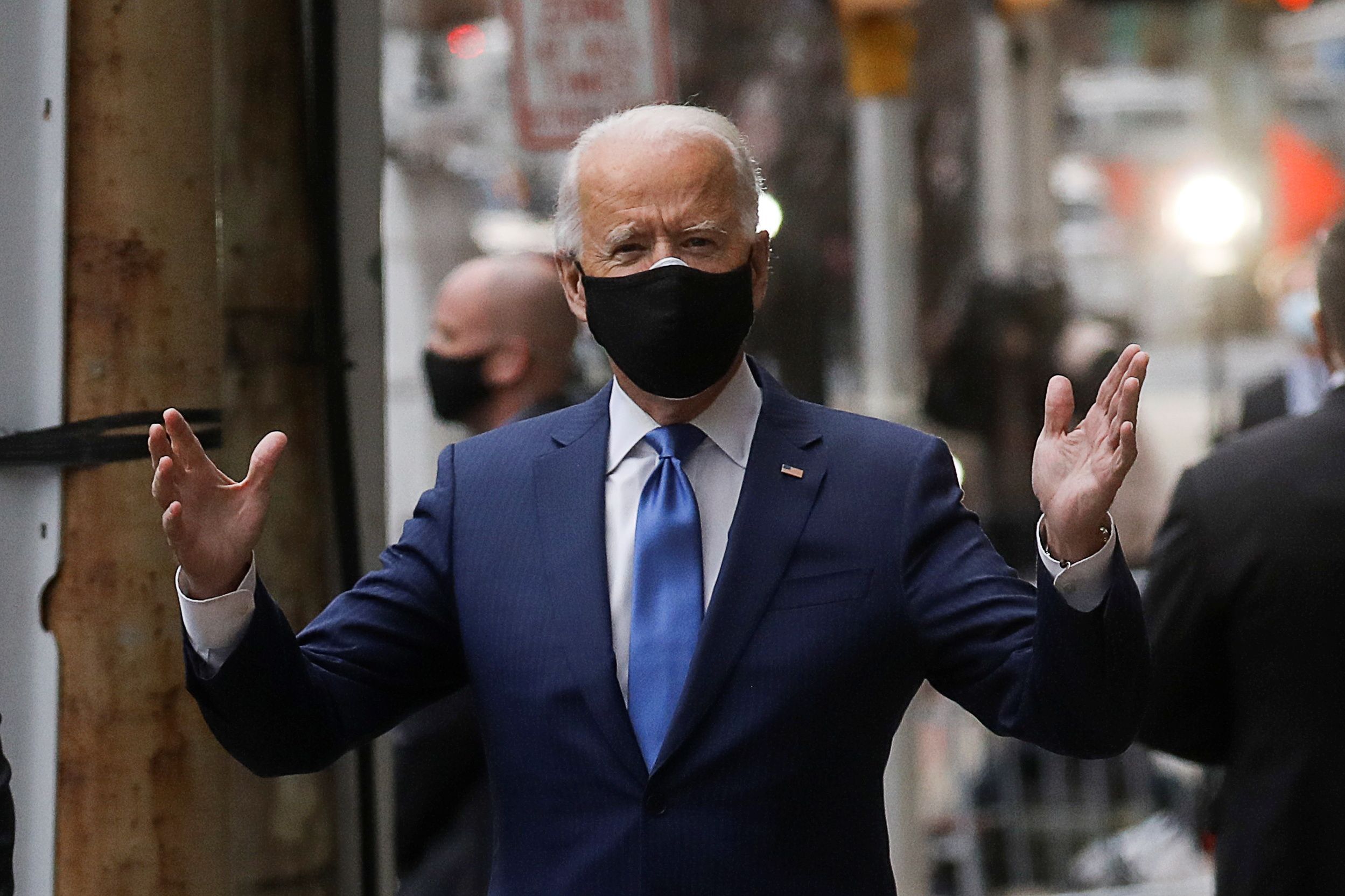The Prospects for Changes in U.S. Policy towards Latin America

The Balance of Trump Administration Policy
Latin America’s marginalisation in U.S. foreign policy deepened during the tenure of now-former President Donald Trump. The president visited the region only once, for the G20 summit in Argentina in 2018. He saw Latin America mainly as a source of threats to U.S. security, mainly illegal immigration, drug trafficking, crime, and political instability. Hence, his antagonistic rhetoric was symbolised by the plan to build—de facto expand—a wall on the 3,100 km U.S. border with Mexico.
The Trump administration persuaded major countries of origin and transit of irregular migrants—Mexico, Guatemala, Honduras, and El Salvador—to seal their borders and host U.S. asylum seekers while their applications were processed. It achieved that by threatening these countries with punitive tariffs or blocking development aid and tax remittances from the U.S., the latter a significant source of support for migrant families in these countries and the states’ economies. At the same time, the Trump administration’s lax approach to violations of democratic standards and human rights in these countries facilitated, for example, the dismantling of international anti-corruption commissions by the authorities of Guatemala and the Honduras.
Striving to reduce the U.S. trade deficit, the Trump administration changed the concept of economic cooperation with Latin America. In 2017, it withdrew from the Trans-Pacific Partnership (TPP), which included Chile, Peru, Mexico, and others. It compelled the latter country and Canada to renegotiate NAFTA—the three parties replaced it with the USMCA in July 2020. The administration also imposed punitive tariffs on aluminium and steel from Brazil and Argentina.
The Trump administration also stepped up its policy of isolation and pressure on authoritarian governments: Cuba, which meant a break with the Obama administration’s rapprochement policy; Nicaragua; and, in particular, Venezuela. U.S. efforts to oust Nicolás Maduro’s government failed because of China’s and Russia’s support of the Venezuelan authorities, among other reasons. The confrontational policy towards these three Latin American countries allowed Trump to achieve a different goal, namely, to expand support among some groups of Latino voters in the U.S., although not enough for him to be re-elected.
The previous administration’s antagonistic policies did not prevent it from strengthening political contacts with the authorities of Mexico and Colombia. The latter remains the closest U.S. ally in South America, although it suffered Trump’s threats of “decertification” if its government did not step up anti-narcotics activities. The Trump administration also boosted political contacts and economic, defence, and technology cooperation with Brazil, taking advantage of the strongly pro-U.S. stance of the government of President Jair Bolsonaro. Cooperation with Latin American partners was meant to help the Trump administration intensify the pressure on Maduro and limit China’s expansion in Latin America.
The Biden Administration’s Premises and Goals
The new government mainly seeks to restore U.S. credibility and influence in Latin America. This follows an assessment that Trump’s policies have damaged the reputation of the country and, contrary to the intent, facilitated China’s further economic and political expansion in the region, jeopardising U.S. security and economic interests.
The administration’s first step was to withdraw Trump’s most controversial immigration decisions. On the day of his inauguration on 20 January, Biden halted construction of the wall on the border with Mexico and loosened deportation rules—although a federal judge blocked the latter after Texas sought a delay—and legalised the stay in the U.S. of irregular immigrants. In February, he decided to allow some asylum seekers into the country. The new administration intends to increase the focus on addressing the causes of migration by financial assistance to the countries of origin of immigrants. It will maintain the principle of conditionality of support, for example, depending on how governments combat corruption.
The Biden administration wants to revive the multilateral dialogue between the countries of the Americas. Climate, including the energy transition, will be the lead priority. The U.S. sees an opportunity to engage in the region through investments in the development of renewable energy sources, for example, in Argentina and Chile. While the fight against the COVID-19 pandemic in the U.S. is drawing the Biden administration’s focus right now, the global crisis is seen as an opportunity to strengthen cooperation with Latin American partners, for example, on access to vaccines.
In the economic sphere, Biden will largely continue Trump’s approach, though the current president’s policies, for example, on tariffs, will be more predictable. The U.S. prioritises the USMCA as a tool to strengthen cooperation with its neighbours. Although Biden has not declared his intent to return the U.S. to the TPP, he is interested in working with Latin American countries to compete more effectively with Asian economies, especially with China. For example, Biden has mentioned the Pacific Alliance, an economic integration bloc that includes Chile, Colombia, Mexico, and Peru, as a prospective trade partner.
Members of the new administration consider Trump’s policy toward authoritarian regimes in the region as ineffective and call for reformulating it. In the case of Cuba, they intend to gradually lift some restrictions, for example, on remittances and travels of U.S. citizens to the island, as well as to restore the political dialogue. However, they see the situation in Venezuela as the biggest challenge. The Biden administration will maintain the policy of sanctions, but it supports greater coordination of multilateral initiatives and calls for Venezuela’s political crisis to be resolved through democratic elections. It also intends to increase humanitarian aid to the Venezuelan people. It is considering granting them with protected status (TPS) allowing temporary residence and work in the U.S. It also wants to support countries with the largest inflow of Venezuelans, especially Colombia, which is hosting a record 1.7 million of them.
The Biden administration prioritises relations with Mexico, Central American countries, and Colombia. In the case of Brazil, it intends to continue the initiatives taken during Trump’s tenure to develop economic and technological cooperation but does not, however, show a willingness to maintain intensive contacts at the highest level.
Conclusions and Perspectives
The Biden administration has taken the easy step toward regaining trust in the U.S. in Latin America by withdrawing from the most antagonistic elements of the Trump administration’s policies. The Summit of the Americas, to be hosted by the U.S. this year, will be an opportunity to present a broader concept of its Latin American policy. However, the region’s importance to the U.S. will remain limited and the room for further changes in Latin American policy will be narrow. Mainly, the COVID-19 pandemic and its long-term negative socio-economic effects will scale up the challenges for the U.S. in its attempts to regain influence in the region. The pandemic and the devastation caused by two hurricanes in Central America in November 2020 have been exacerbating migration to the U.S., and the Biden government will maintain some of the restrictions on the border with Mexico. The court block on Biden’s moratorium on deportations also shows that the president will face resistance in trying to remove restrictive immigration rules.
The emphasis on strengthening democracy and climate issues will lead to tensions with some countries in the region, for example, with Bolsonaro’s government, especially when Biden calls for Brazil to better protect the Amazon rainforest. In this situation, the new administration may find it difficult to be a more attractive partner than China for some Latin American countries. U.S. development aid, including tackling the adverse effects of the pandemic, will be a major asset in the recovery of its influence in the region.
One of the main challenges for the U.S. will be the situation in Venezuela. Maduro, who consolidated power with the support of foreign allies and took control of parliament in January this year, will not be open for dialogue with the opposition. The question of how to persuade the Venezuelan authorities to engage in talks with its rivals likely will be one of the topics of the U.S.-EU dialogue. Both partners could also coordinate support for Latin American countries, for example, on access to COVID-19 vaccines and economic recovery after the pandemic.


